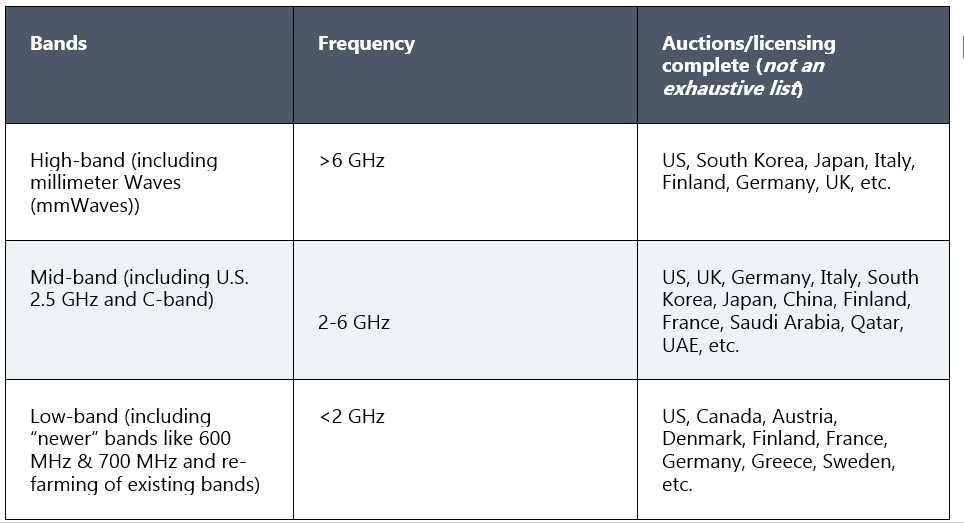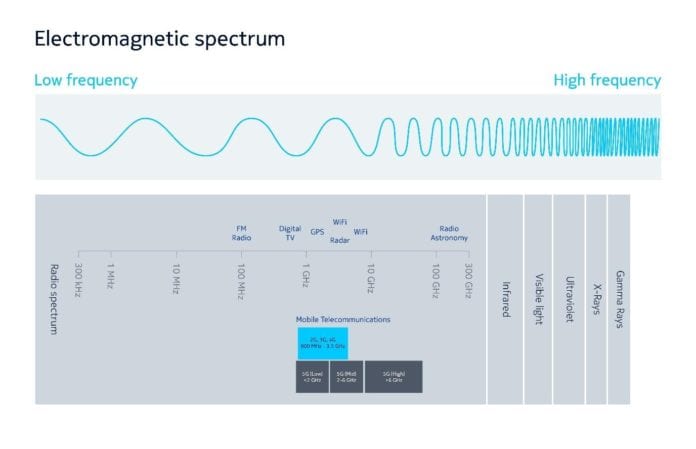The conversations around, and investment in, spectrum and C-Band have accelerated rapidly.
In 2020 alone, companies spent over $80 billion purchasing C-Band spectrum at the U.S. Federal Communications Commission (FCC) auction, which covered operating licences in the frequency range of 3.7 – 3.98 GHz. The FCC announced the winning bidders at the end February 2021.
Based on an accelerated clearing schedule, 100 megahertz of the auctioned spectrum will be cleared in 46 of the top U.S. markets by December 2021. By December 2023, the remaining 180 megahertz in these same 46 markets, as well as the full 280 megahertz in the other markets, will be cleared for use by 5G services. It is anticipated that the rollout of 5G networks in the C-Band will commence during 2021 in the initial 100 megahertz and continue as the additional 180 megahertz of spectrum is made available in 2022 and 2023.
“The close of the C-Band auction today further ensures that the strongest 5G platform in the world will be built here in the U.S.,” said FCC Commissioner Brendan Carr in January 2021.
As the world continues to roll-out 5G, it’s key to understand the impact of spectrum, the differences between various bands and, most importantly, their uses.
Setting the foundation
At a high level, the electromagnetic spectrum is a finite natural resource and humankind has learned to use some of it to its advantage.
For example, at lower frequencies, spectrum is associated with radio waves – used for many different purposes – and at extreme frequencies it’s linked with medical X-rays, etc. Of course, the electromagnetic spectrum also covers visible light.
Radio frequencies are a part of the electromagnetic spectrum. However, as spectrum is finite, the same band is sometimes shared by several services. For instance, mobile communications including 5G, terrestrial and satellite TV, GPS, Wi-Fi, Bluetooth, public safety and radar all use radio frequency spectrum.

But what is ‘C-Band,’ and where does it fit into the wider topic of electromagnetic spectrum bands?
To start, the range of frequency bands being allocated to 5G around the world is much broader than previous generations of mobile technologies.
Initial 5G network deployments in the U.S., for example, have been in what the telecommunications industry calls the ‘high-band’ and ‘low-band.’
The high-band has much more available spectrum than the mid- and low-band. As such, it is suited well for densely populated cities and locations that generate a lot of mobile data traffic and need the high capacity that high-band spectrum has to offer. However, high-band coverage is generally limited and is affected by the environment in which it is deployed such as surrounding buildings.
By contrast, low-band spectrum offers far greater coverage and much better building penetration capabilities. For that reason, it is used to provide wide-area coverage; often to less densely populated rural areas, where there is generally much less traffic but the need to provide coverage remains. Low-band requires fewer base-station sites compared to high-band and is therefore a more cost-effective solution to the coverage needs of areas where the business case might otherwise be challenging. For that reason, low-band is a valuable spectrum asset.
The C-Band spectrum just auctioned off in the U.S., however, falls within the ‘mid-band’ range. This provides a good balance of both capacity and coverage – enabling a broader rollout and introduction of 5G services, which is vital in all markets.

Why 5G data rates can be higher than other technologies?
At the mid- and high-frequency bands, there tends to be more available spectrum than the lower bands, and thus more bandwidth can be allocated. More bandwidth equals more capacity which equals higher data rates.
For instance, the channel bandwidth for a typical 4G network operating in the 2.1 GHz band would be up to 20 MHz. Comparatively, in the mid-band 5G frequencies around 3.5 GHz the bandwidths are up to 100 MHz.
What’s next for CSPs deploying C-Band?
The winners of the U.S. C-Band spectrum will be designing their networks by considering the capacity requirements for today as well as the future. As the name suggests, cellular networks are built around ‘cells,’ each with its own base station for transmitting and receiving signals.
The 5G base-station equipment comes in all shapes and sizes, giving network architects plenty of options as they design their networks. So-called macro base-stations, for instance, leverage ‘Massive MIMO radios’ (multiple-input multiple-output). As a result, they can increase capacity without requiring more spectrum, by allowing the transmitting and receiving of multiple signals simultaneously over the same radio channel. Deployed indoors and outdoors, ‘small cells’ provide coverage and capacity in data traffic hotspots – complementing the coverage of the macro base-stations.
C-Band is the sweet spot for CSPs as it combines good signal propagation and high bandwidth. The immediate benefits will be seen by consumer customers accessing better mobile broadband services, but applications will soon follow for enterprises as well, where 5G will underpin the digitalization and automation transforming businesses and industries.

